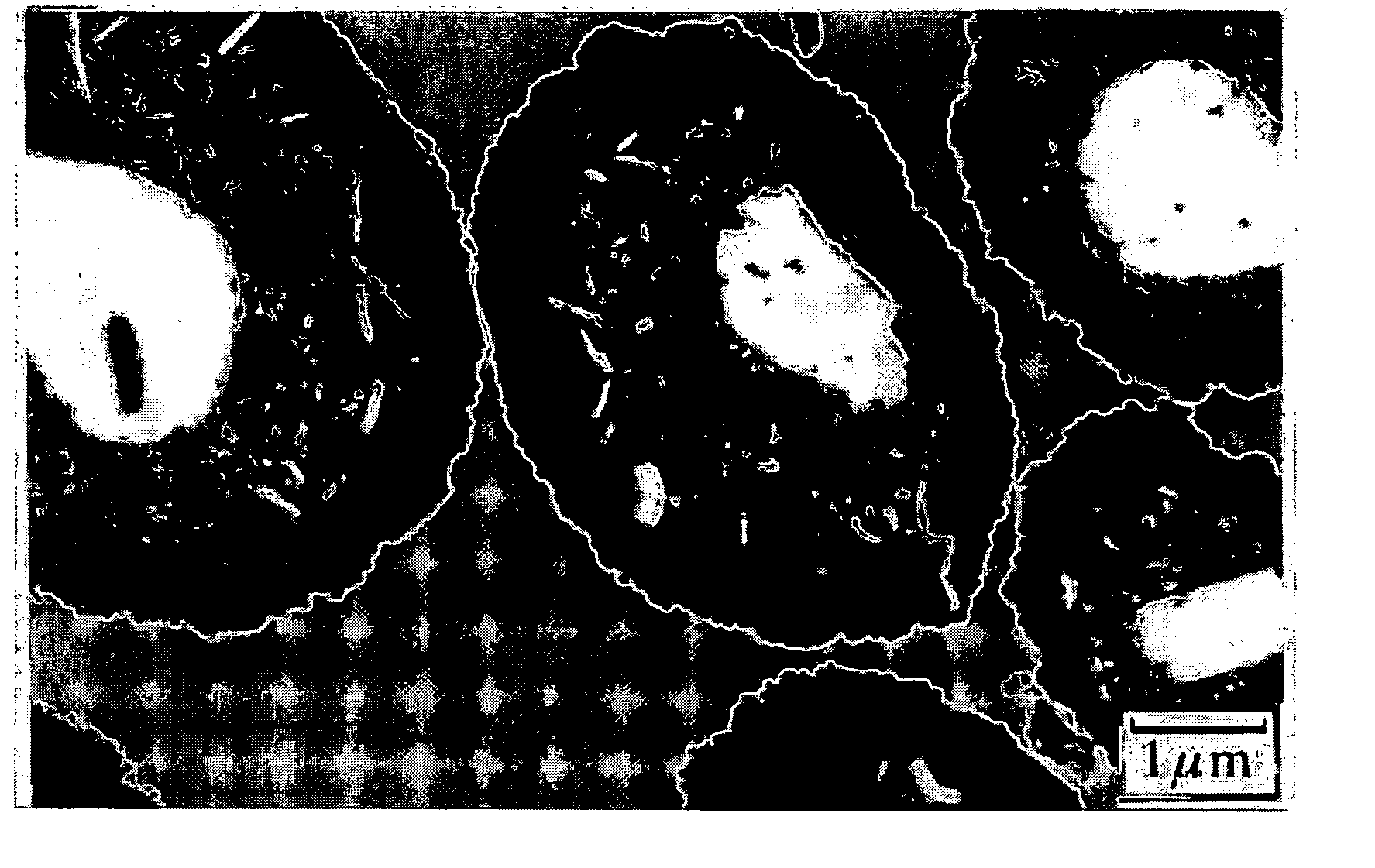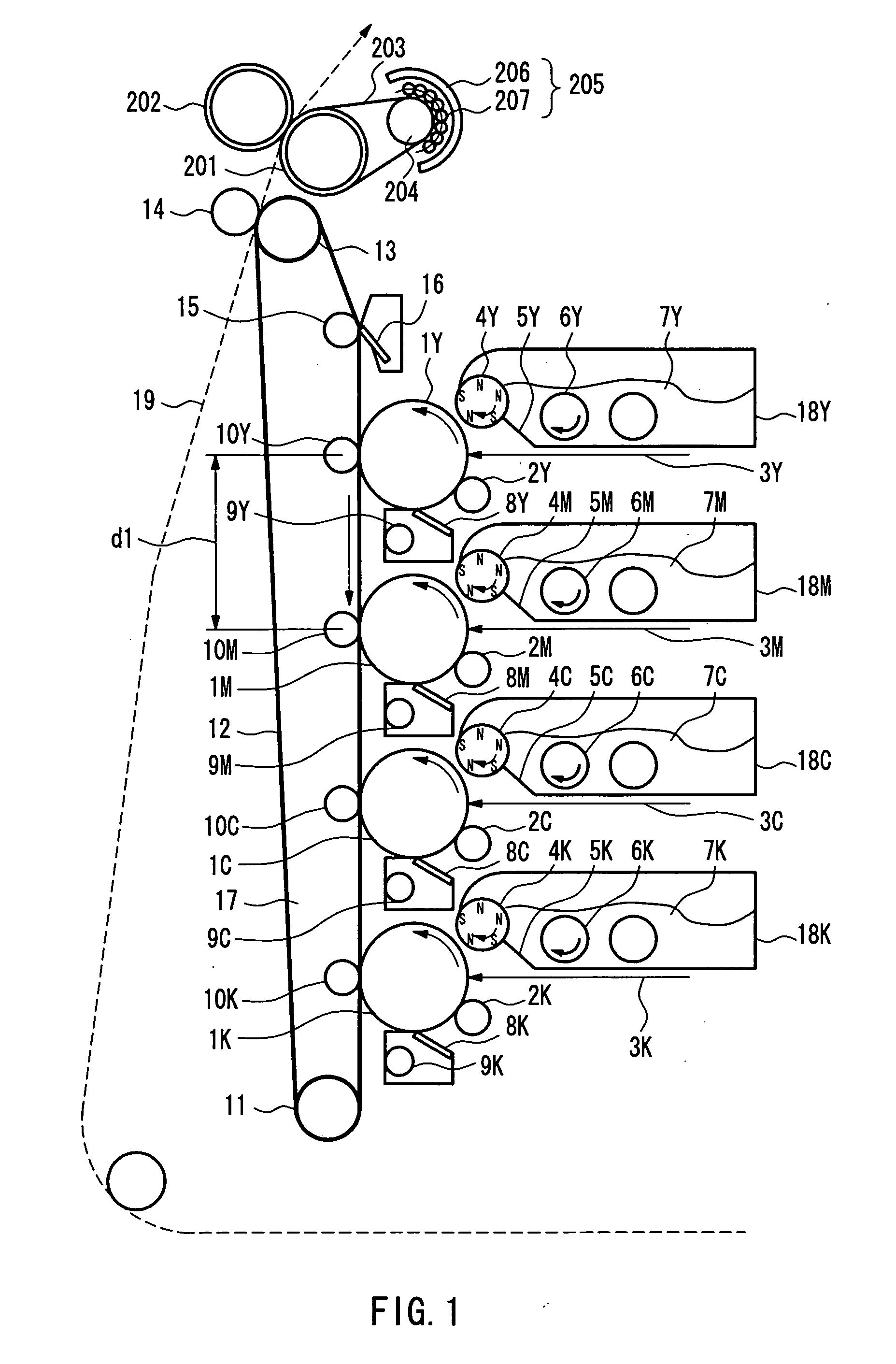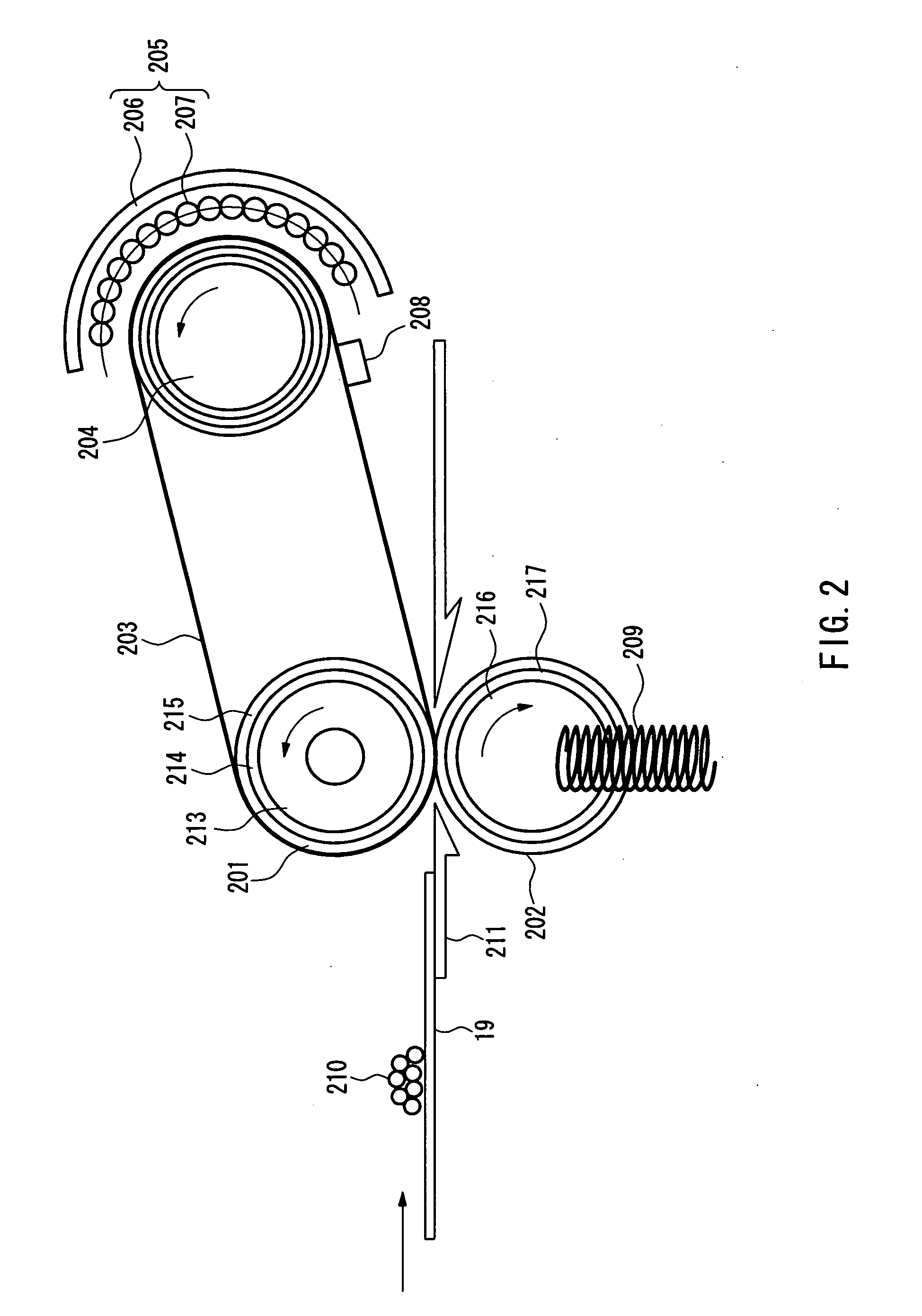Toner, process for producing the same, two-component developing agent and method of image formation
a developing agent and toner technology, applied in the field of toner, can solve the problems of poor color reproduction, light scattering on the surface or the inside of toner images, and affect the original color of toner pigments, so as to prevent offset, prolong service life, and high ohp transmittance
- Summary
- Abstract
- Description
- Claims
- Application Information
AI Technical Summary
Benefits of technology
Problems solved by technology
Method used
Image
Examples
examples
[0166] MnO (39.7 mol %), MgO (9.9 mol %), Fe2O3 (49.6 mol %), and SrO (0.8 mol %) were placed in a wet ball mill, and then were pulverized and mixed for 10 hours. The resultant mixture was dried, kept at 950° C. for 4 hours, and temporarily fired. This was pulverized for 24 hours in a wet ball mill, and then was granulated and dried by a spray dryer. The granulated substance was kept in an electric furnace at 1270° C. for 6 hours in an atmosphere of oxygen concentration of 2%, and fully fired. The fired substance was ground and further classified, thus producing a core material of ferrite particles that had an average particle size of 50 μm and a saturation magnetization of 65 emu / g in an applied magnetic field of 3000 oersted.
[0167] Next, 250 g of polyorganosiloxane expressed by Formula 7 in which (CH3)2SiO—unit is 15.4 mol % and Formula 8 in which CH3SiO3 / 2— unit is 84.6 mol % was allowed to react with 21 g of CF3CH2CH2Si(OCH3)3 to produce a fluorine modified silicone resin. This...
example 2
Carrier Producing Example 2
[0169] A core material was produced in the same manner as the Carrier Producing Example 1 except that CF3CH2CH2Si(OCH3)3 was changed to C8F17CH2CH2Si(OCH3)3, and a coating was applied, thus providing a carrier A2.
example 3
Carrier Producing Example 3
[0170] A core material was produced in the same manner as the Carrier Producing Example 1 except that a conductive carbon (manufactured by Ketjenblack International Corporation EC) was dispersed in an amount of 5 wt % per the resin solid content by using a pearl mill, and a coating was applied, thus providing a carrier A3.
PUM
 Login to View More
Login to View More Abstract
Description
Claims
Application Information
 Login to View More
Login to View More - R&D
- Intellectual Property
- Life Sciences
- Materials
- Tech Scout
- Unparalleled Data Quality
- Higher Quality Content
- 60% Fewer Hallucinations
Browse by: Latest US Patents, China's latest patents, Technical Efficacy Thesaurus, Application Domain, Technology Topic, Popular Technical Reports.
© 2025 PatSnap. All rights reserved.Legal|Privacy policy|Modern Slavery Act Transparency Statement|Sitemap|About US| Contact US: help@patsnap.com



